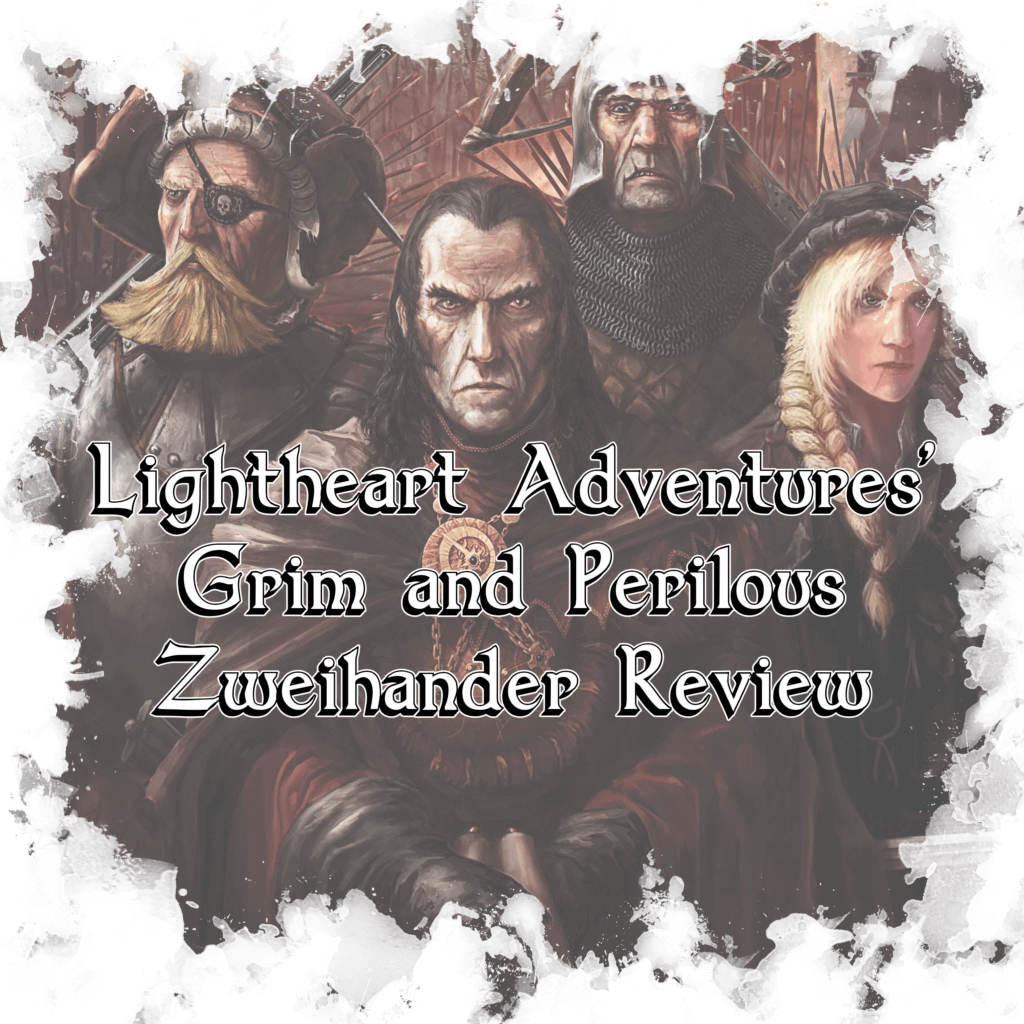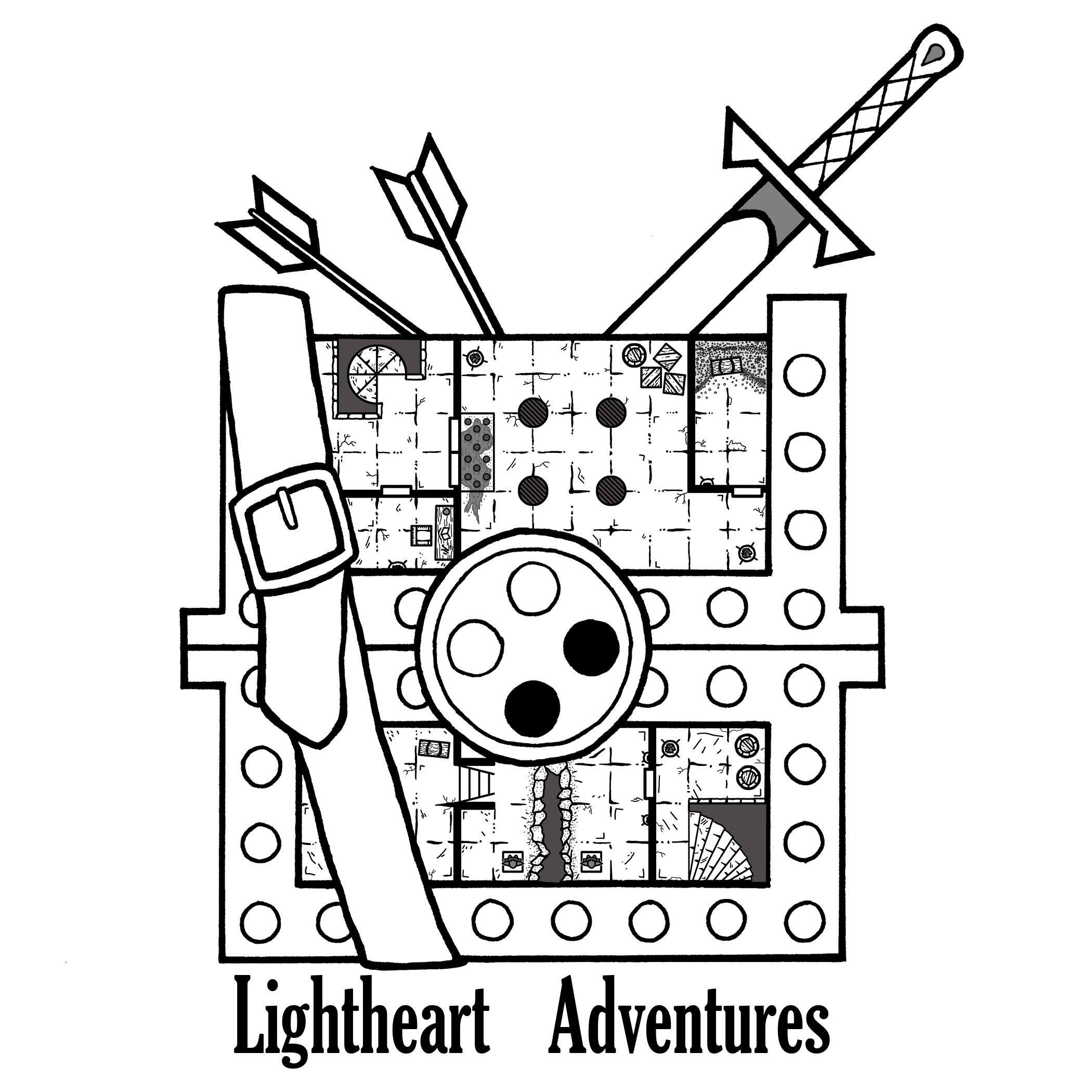I do yardwork for a retired couple in town, and we spend a bit of time chatting about this and that. They’re aware of some of the geeky stuff I’m into and are curious about some of the games. Not long ago the topic of new games came up, and I told them about Zweihander. Their only basis of comparison is the little bit of D&D they’ve picked up from me over the years, and for a second I had trouble explaining the difference between the two. Then, an apt comparison struck me: If D&D is like Disney fantasy, then Zweihander is like the old Grimm’s fairy tales, with hard-learned lessons, death, and few happy endings. That got a good chuckle out of them.
I got the Zweihander book a few weeks ago and finally read through the thing. Seriously, it’s massive at nearly 700 pages! It’s a dark-fantasy setting that primarily uses percentile die to resolve choices, while the book has everything players and game masters need. I want to share my quick Zweihander review, and since there’s a lot to cover, let’s get to it!
Disclaimer: This post contains affiliate links, meaning we may receive a small commission from qualifying purchases if you click on our links, at no additional cost to you. As Amazon affiliates, we may earn from qualifying purchases. You can see our full disclosure here. Thanks for supporting your favorite dungeon artists!
All Trademarks, including places, things and character names and their distinctive likenesses are property of Grim & Perilous Studios, LLC.
Lightheart Adventures' Zweihander Review
Game Mechanics
As mentioned earlier, Zweihander uses a percentile die system for nearly everything in-game. Want to scale a wall? The game master establishes the difficulty, and then the player rolls two d10s in an attempt to score equal to or lower than their skill rating. Ideally, the better you are at a certain skill, such as climbing, the better chance you’ll have to roll low enough to succeed.
As an example, Bart the thief wants to climb an eight-foot-high wall. Bart is fairly burly and good at climbing and has a skill rating of 67%. The gamemaster establishes that climbing is a Standard challenge, which means Bart receives no penalties or bonuses. Bart rolls two d10 and gets a 43%, which is a success! However, if Bart tried climbing the wall in the rain, the game master might say that it’s a Hard challenge, which applies a -20% penalty to Bart’s 67%, meaning Bart would have to roll 47% or lower to succeed. There are quite a few ways to modify skill tests, both positively and negatively.
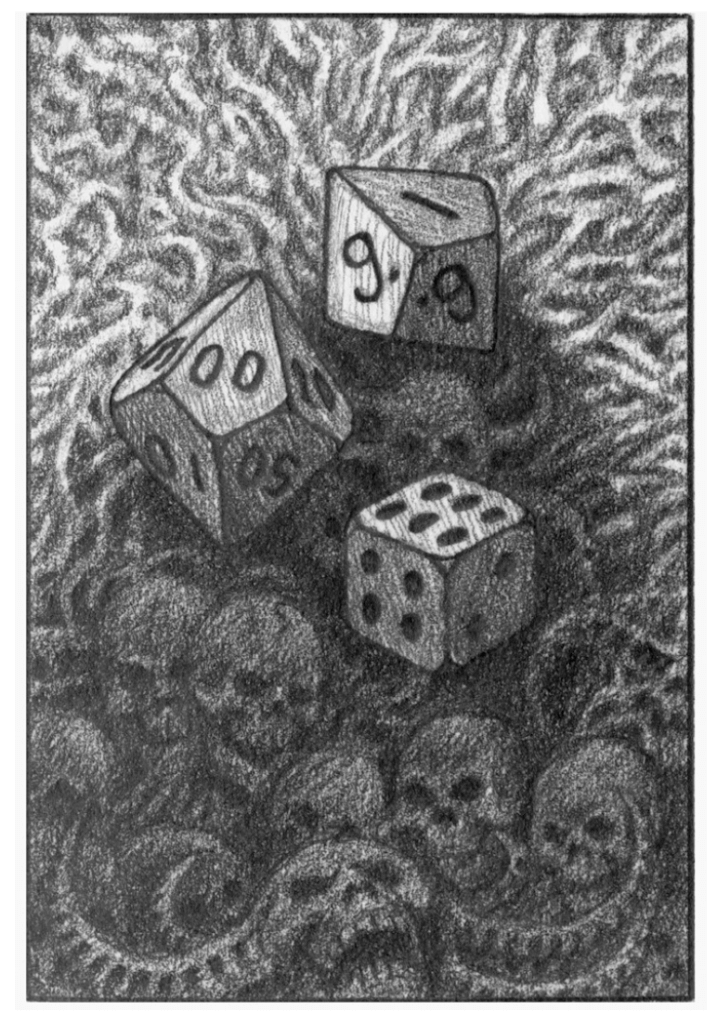
Artwork from Grim & Perilous Studios
The Zweihander d100 system allows for multiple methods of changing die rolls, from talents, performing criticals by rolling doubles, and the “Flip to Succeed/Fail” system. I particularly enjoy the “Flip to Succeed/Fail”, as it reminds me of the advantage system set in place by D&D. For example, Bart the thief wants to use a firearm in defense, despite never using a gun in his life. Since he has no skill ranks with firearms, any skill tests he rolls will “Flip to fail”. In practice, Bart rolls two d10 and gets a 29%. Since he has to flip to fail, it instead becomes 92% and they must take that result, representing how difficult an untrained skill can be. It’s a creative method to implement additional ways to change die rolls. Plus, rolling extra die makes my math brain happy.
Makin' Characters with personality
The next thing we’ll dive into on this Zweihander review is character creation! Making new characters is surprisingly robust despite a limit on how much “min/maxing” players are allowed. Players are encouraged to “let fate take the reins” in regards to their starting skills and other class features to reinforce the grim and perilous nature of Zweihander. To me, I think this is a fun way to inspire more roleplay if your character’s rolls are less than perfect.
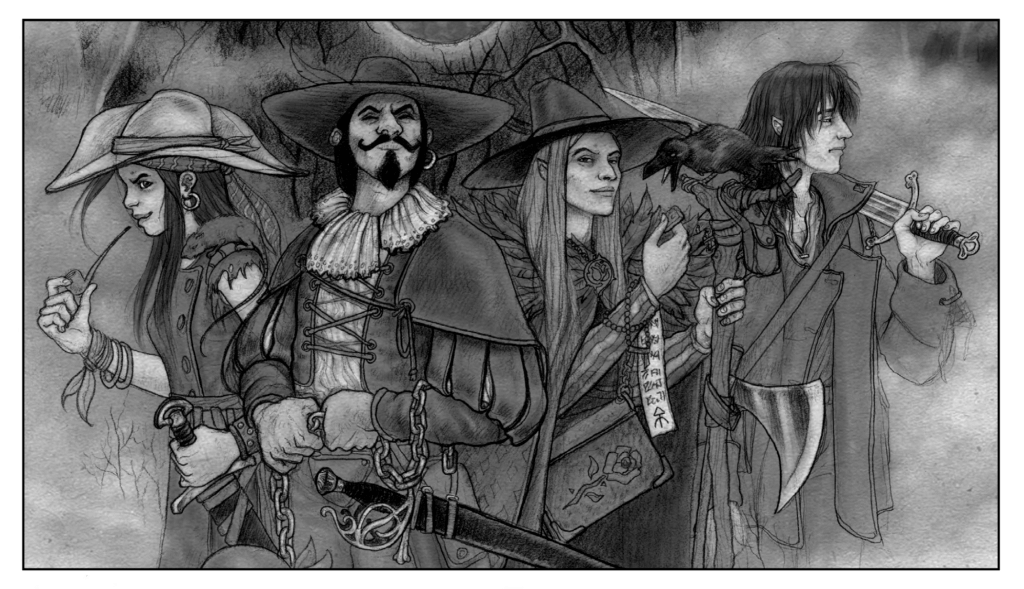
Artwork from Grim & Perilous Studios
Zweihander features a few “ancestries” to choose from, such as humans, elves, dwarves, and more. While the ancestries’ appearance to other representations in fantasy media seems similar, the book’s narrative highlights the ugliness and lesser qualities that games like D&D gloss over. There are no “noble races”, as every ancestry has its fair share of flaws. Elitist Elves rail against other ancestries for their deficiencies, Dwarves are dour, mercurial perfectionists, and even the friendly Halflings are more opportunistic than not. All of this adds an element of desperation as the characters learn to deal with their shortcomings to form together and face the evils of the unknown.
One small thing for the Zweihander review that I found very entertaining: Ancestry rules allow for racial traits, but players choose one randomly. This means that not all elves have night-vision, nor do all dwarves have a resistance to poison. It’s touches like this that make me want to just create a roster of player characters on a rainy afternoon!
Consummate Professionals
Once players select their ancestry, they then roll for their archetype and profession. Archetypes determine what kind of role the character plays and their profession choices as the game progresses. Professions are just that — they represent the kind of job your character has. You can be anything from an Apothecary, a Graverobber, a Man-At-Arms, and even a Beggar! There are 72 professions listed in the Zweihander book, with even more specialized professions and add-ons available online. Once selected, your profession determines what skills and talents you may gain as your character gains experience.
Rather than gain levels, characters start new professions at significant milestones and use experience to add newer skills to their repertoire. Character progression maxes out at three professions, if they’re lucky enough to survive that long!
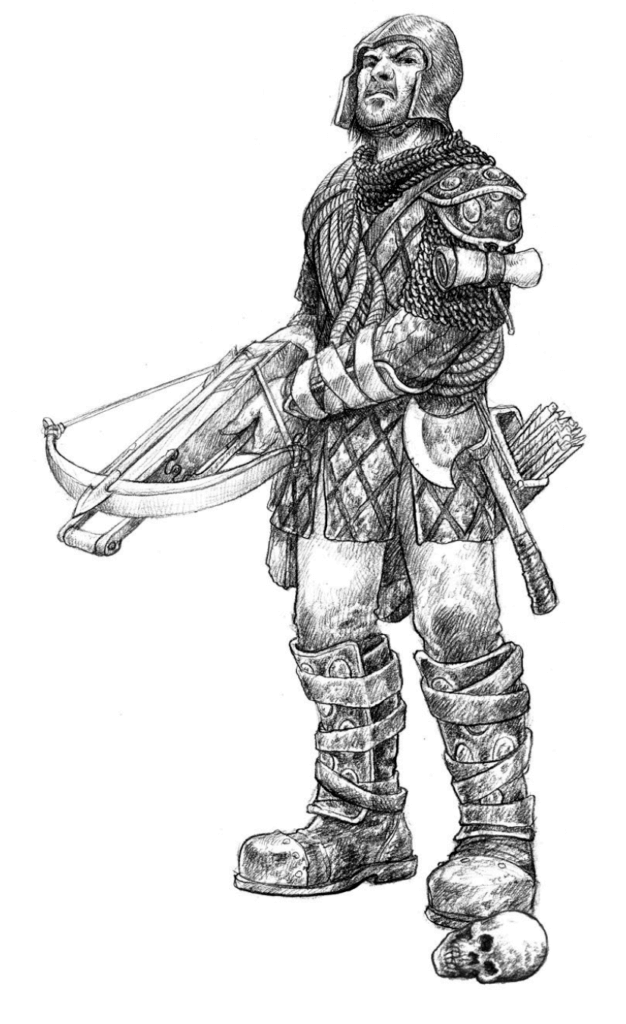
Artwork from Grim & Perilous Studios
Rough and Tumble Combat
Combat in Zweihander is exceedingly brutal. Players expecting multiple combat encounters as they try dungeon-delving are in for a swift “Total Party Kill”. Characters endure lingering injuries if fights go on too long, and even psychological stress can be a factor. Arbitrary hit points are not used, but rather health is represented by a character’s Damage Threshold. Ones’ Damage Threshold is a combination of armor worn and their determination to not get hurt. If a character ever takes more damage from a strike that’s higher than their threshold, they “move negatively” down a Damage Condition Track that gets progressively more gruesome. Seriously, it doesn’t take much for perfectly healthy individuals to get turned into hamburger.
There are quite a bit of tactical options as well, as Zweihander allows for plenty of alternative offensive options beyond “I swing my sword.” Strong characters may attempt a Stunning Blow on their opponent, reducing actions on following turns, or play Dirty Tricks to blind foes.

An apt example of Dirty Tricks
Allies (and enemies) can even perform “Litanies of Hatred” that reduce an opponents’ Damage Threshold! Just because a character isn’t a warrior doesn’t mean they don’t know how to fight dirty! I look forward to running combat for my players and seeing what kind of tricks they utilize to survive.
Behind the Screen
The back half of the Zweihander book consists of material primarily for game masters: from sections teaching new game masters how to run Zweihander to a self-contained adventure and a huge bestiary! The amount of content here feels a little overwhelming, but thankfully much of it is optional or situational.
- Lore: Zweihander is setting neutral, meaning it can be placed in any fantasy or mundane world with a little configuring. However, so much of the flavor baked into the ancestries and other facets beg to be explored! If the creators released an official Zweihander setting campaign using lore from this book, it’d be an insta-buy for me!
- Bestiary: There are over 150 pages worth of enemy stat blocks in this book. That’s unbelievable! These creatures run the gamut from petty thugs to demon princes and everything in between. There’s so much here to work with and incorporate into games that it’d be hard not to overwhelm the players with monster variety. As someone familiar with Warhammer Fantasy, many of the monsters in Zweihander are very reminiscent of creatures found in Games Workshops’ material.
- Mini-Campaign – A Bitter Harvest: The rulebook contains a 32-page adventure module mixing intrigue, combat, and a wedding party. This two-to-three session adventure is a perfect introduction for new players to Zweihander. One aspect that I like is that the authors included sidebars detailing alternative paths that playtest groups took during their time with the game.
Final Impressions
There’s so much crammed into the rule book it’s hard to succinctly express all of my feelings for it in this brief Zweihander review. I didn’t even touch on the magic system, the inspired alignment system, or the fun equipment options available to players. I did stumble across the occasional typo or weird grammatical hiccup, especially in the adventure section, though these were few and far between. Another quibble is that for someone very familiar with a d20 system and no background with Zweihander, I had a tougher time understanding the rules on first read. There’s a lot of math involved, and the book tends to separate related topics to different sections.
That said, it’s very worth the time to check out everything this book has. I found myself laughing out loud at the occasional joke reference or grinning at how utterly ghastly some features are, like the section dedicated to infections and diseases. I’m very excited to run my players through this grim and perilous system!
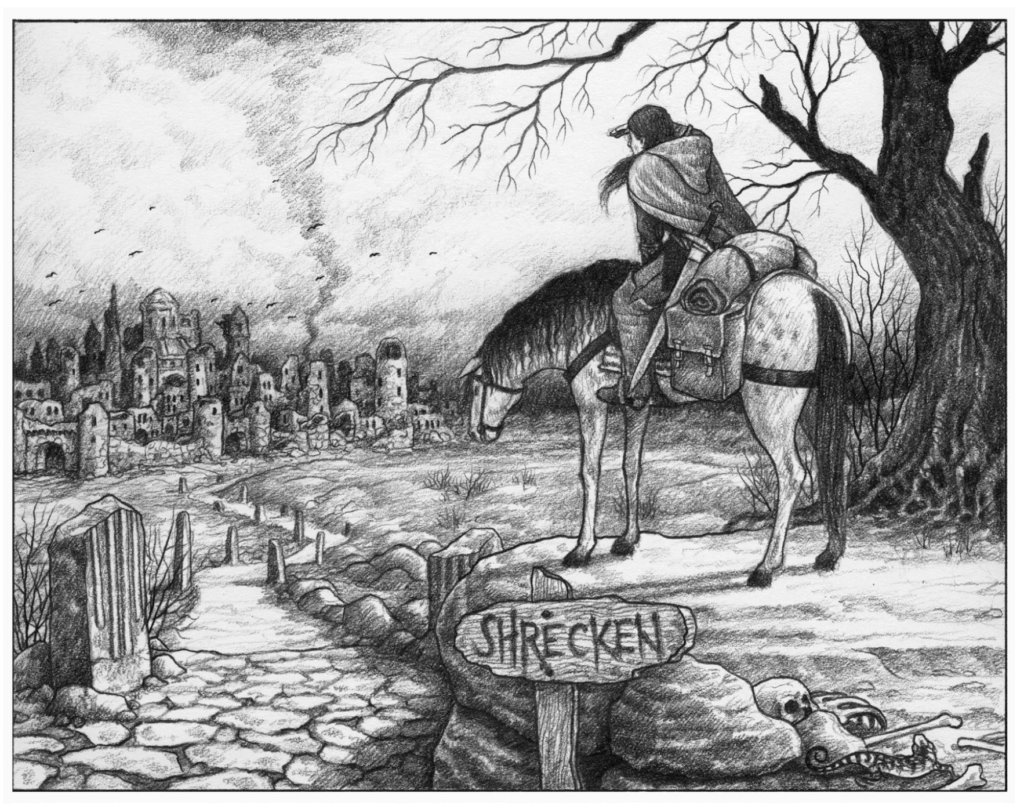
Artwork from Grim & Perilous Studios
Thanks for dropping by! We would love to know what you thought of this Zweihander review, so please drop a comment here on the blog, on Twitter, Facebook, Instagram, or Discord! If you’d like access to more maps and content, including downloadable PDFs of our adventures, check out our Patreon. We’re able to do what we do because of all our amazing Patrons!

